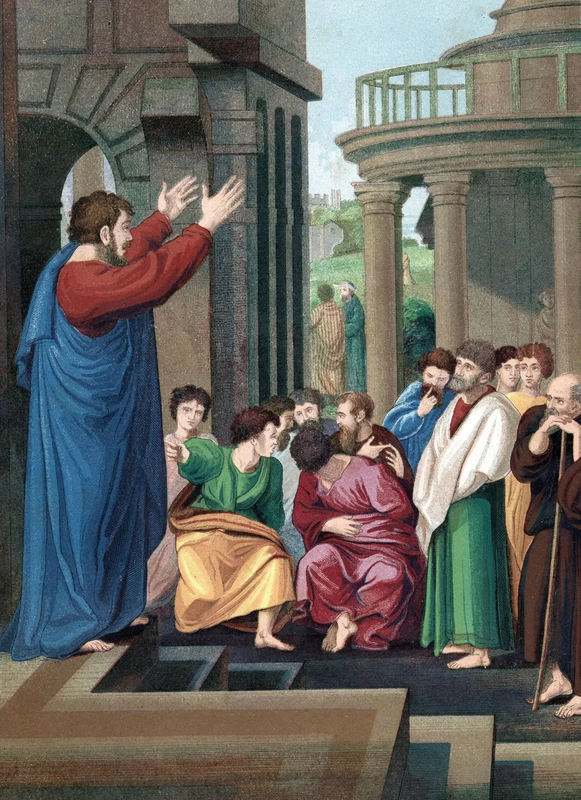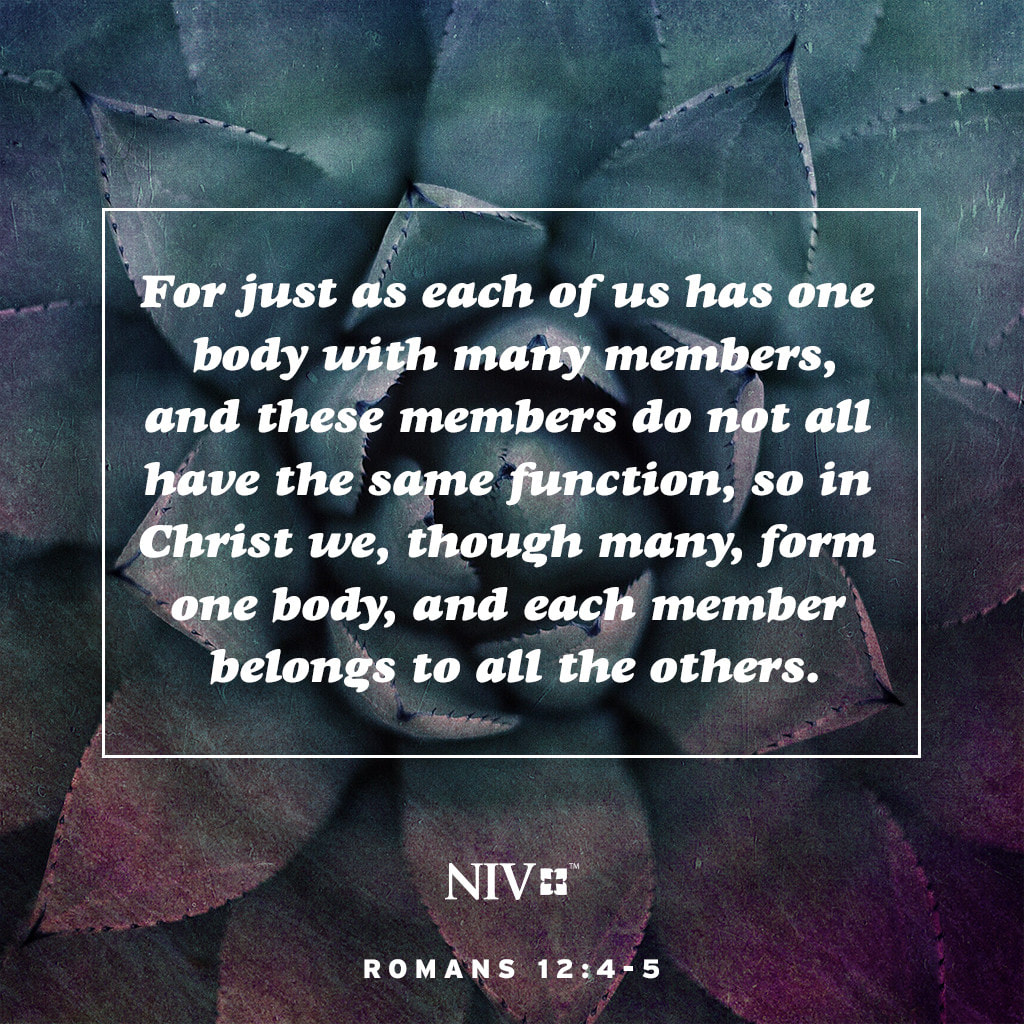Is devoted to events occurring in the land of Israel at
the time of
The return
from the
Babylonian captivity
and subsequent years,
covering a period of approximately one century,
beginning in 538 B.C.
The emphasis in Ezra is on the
rebuilding of the Temple.
The book contains extensive genealogical records,
principally for the purpose of establishing the claims to the
priesthood on the part of the
descendants of Aaron.
Ezra 3:11
“With praise and thanksgiving they sang to the LORD: ‘He is good; his love to Israel endures forever.’ And all the people gave a great shout of praise to the LORD, because the foundation of the house of the LORD was laid.”
Ezra 7:6,
"…this Ezra came up from Babylon. He was a teacher well versed in the Law of Moses, which the LORD, the God of Israel, had given. The king had granted him everything he asked, for the hand of the LORD his God was on him."
Since well over half a century elapsed between chapters 6 and 7, the characters of the first part of the book had died by the time Ezra began his ministry in Jerusalem. Ezra is the one person who is prominent in the Books of Ezra and Nehemiah.
Both books end with prayers of confession (Ezra 9; Nehemiah 9)
and a subsequent separation of the people from the sinful practices into which they had fallen. Some concept of the nature of the encouraging messages of Haggai and Zechariah, who are introduced in this narrative
(Ezra 5:1), may be seen in the prophetic books that bear their names.
The Book of Ezra
Covers the return from captivity to
Rebuild the Temple
up to the decree of Artaxerxes, the event covered at the beginning of the Book of Nehemiah. Haggai was the main prophet in the day of Ezra, and Zechariah was the prophet in the day of Nehemiah.
We see in the Book of Ezra a continuation of the biblical theme of the remnant. Whenever disaster or judgment falls,
God always saves a tiny remnant
for Himself Noah and his family
from the destruction of the flood;
Lot’s family from Sodom and Gomorrah;
the 7,000 prophets reserved in Israel despite
the persecution of Ahab and Jezebel.
When the Israelites were taken into captivity in
Egypt,
God delivered His remnant and took them to the
Promised Land.
Some fifty thousand people return to the land of Judea in Ezra 2:64-67,
and yet, as they compare themselves with
the numbers in Israel during its
prosperous days under King David,
their comment is,
“We are left this day as a remnant.”
The remnant theme
is carried into the New Testament where Paul tells us that
“at the present time there is a
remnant
chosen by grace”
(Romans 11:5).
Although most people of Jesus’ day rejected Him,
there remained a set of people whom
God had reserved and preserved in his Son,
and in the covenant of His grace.
Throughout all generations since Christ,
there is the remnant of the faithful whose feet are
on the narrow road that leads to eternal life
(Matthew 7:13-14).
This remnant will be preserved
through the
power of the Holy Spirit
who has sealed them
and who will deliver them safely at
the last day
(2 Corinthians 1:22; Ephesians 4:30).
The Book of Ezra
is
a chronicle of hope and restoration.
For the Christian
whose life is scarred by sin and rebellion against God,
there is
great hope that ours is a God of forgiveness,
a
God who will not turn His back on us
when we
seek Him in repentance and brokenness
(1 John 1:9).
The return of the Israelites to Jerusalem and the rebuilding of the Temple are repeated in the life of every Christian who returns from the captivity of sin and rebellion against God and finds in Him a loving welcome home.
No matter how long we have been away,
He is ready to forgive us and receive us back into His family.
He is willing to show us how to rebuild
our lives and
resurrect our hearts, wherein
is the
temple of the Holy Spirit
As with the rebuilding of the temple in Jerusalem,
God superintends the work of renovating and rededicating
our lives to His service.
The opposition of the adversaries of God
to the rebuilding of the temple
displays a pattern that is typical of that of the enemy of our souls.
Satan uses those who would appear to be in sync
with God’s purposes to deceive us ]
and attempt to thwart
God’s plans.
Ezra 4:2 describes the deceptive speech of those who claim to
worship Christ but whose real intent is to tear down, not to build up.
We are to be on guard against such deceivers, respond
to them as the Israelites did,
and refuse to be fooled by their smooth words and
false professions of faith.
The book of Ezra begins with King Cyrus of Persia
offering Jews the freedom to return to Jerusalem.
Ezra 1:5–6 records,
"Then the family heads of Judah and Benjamin, and the priests and Levites—everyone whose heart God had moved--
prepared to go up and build the
house of the Lord in Jerusalem.
All their neighbors assisted them with articles of silver and gold,
with goods and livestock, and with valuable gifts,
in addition to all the freewill offerings.”
So not all the Jews went back home.
Some of them took advantage of Cyrus’ decree and left Babylon,
while others stayed in Babylon
and helped by donating gold, silver, and other resources.
Several factors were involved in the decision to remain in Babylon.
Some Jews would have been too old to return.
It had been 70 years since the destruction of Jerusalem, and there were many who would have been unable
to endure the journey of approximately 900 miles.
The same would have been true for families with young children and those who were sick or disabled.
Some of the Jews probably refused to move due to the comforts of Babylon. Many of them had been born in Babylon during the exile,
and they knew nothing else.
Further, many Jews had attained
significant status during the reign of Cyrus.
They were comfortable where they were.
Another reason some Jews would not have returned to Jerusalem was a concern for personal safety. The road to Jerusalem and the land of Judea itself were fraught with peril.
In fact, Ezra led those with him in a time of prayer and fasting for safety on their journey—a journey considered “fast” because it only took four months (Ezra 8:24–36). Verse 31 notes,
"The hand of our God was on us, and he
protected us from enemies and bandits-along the way.”
Unfortunately, some Jews were living in disobedience to God at this time.
As a result, they would
not have sensed the need to return to Jerusalem.
Finally, another reason
some of the Jews elected not to return was
the amount of work it would take
to reestablish the nation there.
Jerusalem would have to be rebuilt.
It was not an easy challenge to rebuild an entire city,
including the city wall.
The Jews who remained in Persia later faced their own troubles,
as detailed in the book of Esther.
Those who did return to Jerusalem were part of God’s plan
to rebuild the city and restart temple worship
in fulfillment of God’s promises
(Jeremiah 29:10).
Ezra-Nehemiah
Not the Leadership Lessons You Expect
The biblical figures
of
Ezra and Nehemiah
Are not the most popular or well-known.
They’re not connected to any of the most memorable stories,
Like the flood or the Exodus from Egypt.
No signs or wonders occur during their days.
Neither of them accomplishes mighty feats or brings about
miraculous Acts of deliverance.
Ezra is a Bible nerd who gets other people
to take the Bible seriously.
Nehemiah is essentially a project manager
for the rebuilding
of the ancient walls of Jerusalem.
I mean, that’s cool and all,
but it
doesn’t seem as important or as exciting as
the stories about
Moses or Elijah
It’s totally understandable why no one thinks of
Ezra or Nehemiah
when they think of significant characters of the Bible.
These Are Not Leadership Guides
But this is a huge mistake.
That is, if you want to understand the biblical storyline
on its own terms
Much of the modern Christian tradition hasn’t really known
what to do with the books of
Ezra and Nehemiah
Because of the deeply held assumption that
the
Bible is primarily moral instruction literature
(= a divine rule book),
the stories of
Ezra and Nehemiah are usually turned into
examples for how to lead a revival
(Ezra),
or how to create
momentum for your next church building project
(Nehemiah)
Here’s a list of book title results from
searching “Ezra” and “Nehemiah” on Amazon.com:
Nehemiah: Becoming a Godly Leader;
Revive Us Again: A Study of Ezra and Nehemiah;
Rebuild the Walls: Lessons in Leadership from Nehemiah;
Ezra: A Biblical Model for Restoration;
The Nehemiah Factor: 16 Vital Keys to Living Like a Missional Leader;
Becoming a Disciplined Leader;
Overcoming Fear and Discouragement with Ezra and Nehemiah;
Leadership for Greatness: Leadership Lessons from the Book of Nehemiah
Now I have lots of sympathy for how this trend has taken place.
We really want the Bible to speak a
relevant and personal message to us and to our day;
And that is indeed what the Bible is for.
But the way the Bible goes about
doing that
is not at all
similar to the method of modern self-help literature,
even Christian versions.
Biblical literature doesn’t communicate by
offering simple answers and moral examples.
Rather, the characters that populate the biblical stories
are deeply flawed, often ambiguous, and a mixed-bag of success and failure.
Kind of like you and me.
The stories of Ezra and Nehemiah
tell a realistic story of
religious people who are zealous to
help others
see the world and God in anew way
They are full of passion and love for God,
and do everything in their power to
lead the Israelites
into anew era of devotion to their God … and
it doesn’t work.
The story ends with Nehemiah in angry tears,
beating the Israelites for violating the covenant commands of the Torah
(see Nehemiah ch. 13)
Does that sound like a pattern of
inspirational leadership that you should follow?
It doesn’t,
and
that’s because these books aren’t offering
us a list of tips to successful leadership.
That’s actually the opposite of their message.
In reality, they offer a sobering story of leaders who
cannot bring about the full realization of their hopes and dreams,
even when they tried and prayed their hardest.
This theme fulfills a crucial role in the larger biblical storyline,
but we’ll come back to that.
Lets first understand the books of Ezra and Nehemiah
in terms of their literary design.
They are two separate books in modern English Bibles,
but that division is not original
(it took place later in the history of printed Bibles).
These stories are actually one unified whole and were designed
to be read as one big story told
in three parallel movements with two conclusions,
one positive and one negative
Three Parallel Movements
: Zerubbabel and Joshua lead the first wave of exiles back from Babylon
(with mixed results); Ezra 7-10
Ezra attempts a spiritual revival among the returned exiles
(again, with mixed results); Nehemiah 1-7
Nehemiah leads the rebuilding of Jerusalem’s walls (with mixed results)
Two Concluding Movements: Nehemiah 8-10
Ezra and Nehemiah stage a revival in Jerusalem...; Nehemiah 11-13
which basically fails and ends
with Nehemiah’s anger and disappointment
The first three movements each begin with lots of hope and possibility.
Each starts with a Persian king
sponsoring an Israelite leader to lead a wave of exiles
back to the ruins of Jerusalem to rebuild their lives
(Sheshbazzar and Zerubbabel in Ezra 1-2)
In each case the group returns and makes some
attempt at restoration,
whether it’s rebuilding the temple
(Ezra 3-6)
making a commitment to the Torah (Ezra 9-10)
or rebuilding the city walls (Nehemiah 2-7)
And in each case, they face hostility from without (Ezra 4)
After all three of these cycles, the reader should start to clue in and
"Why do these great beginnings
keep
concluding with mixed results?”
Welcome to the message of Ezra-Nehemiah!
After reading through
Genesis to Kings,
you know why the Israelites ended up in
Babylon in the first place
According to Israel’s prophets, it was the result of
centuries of abandoning Yahweh for other gods,
and for allowing
covenant violation and social injustice
Then you read the prophets, who said
that exile was
indeed a just consequence, but
not the end of the story
God was going to fulfill his great promise to Abraham to
bring divine blessing to all of the rebellious nations,
which he would do through Abraham’s family,
despite their failure and exile
God was going to bring a remnant
back to Jerusalem
and make them the epicenter of the new kingdom
of God that brings peace to all of the nations
(remember Isaiah 2)
In other words, our hopes are really high as we turn to Ezra ch. 1
and read that Israelite
exiles are coming back from Babylon.
We think, “This is it!”
The great restoration of God’s kingdom,
when
forgiven Israel will become the people of the
New Covenant
(remember Jeremiah 31)
whose hearts are fully devoted to loving God
and their neighbors
We should be brimming with expectation as we read Ezra-Nehemiah.
But at every turn of the story,
things don’t work out the way you
thought they should
When the new temple is
rebuilt,
many people are thrilled
Yet, we’re told
That the elders who saw the final days
of
Solomon’s Temple wept
(Ezra 3:12-13)
There was a great gap between their expectation
and the reality of what took place
When Ezra returns
to lead a revival, he finds out that
many of the leaders of the returned exiles
have been compromised
by inappropriate marriages to non-Israelites
(Ezra 9-10)
When Nehemiah leads a movement to
rebuild the walls,
he discovers that the returned exiles
have perpetuated
unjust lending practices
leading to the
enslavement of their fellow Israelites
(Nehemiah 5)
What’s going on here?
These three movements are followed by the high point of the book.
In Nehemiah 8-10
the walls of Jerusalem are dedicated with great fanfare.
There are choirs, a marching band, the whole bit!
They rally Israelites from all ages to
hear the Scriptures read aloud.
It’s a seven day Bible marathon,
and the people are so moved that they commit themselves
to
following the terms of the Torah all over again.
The temple won’t be abused by
power politics anymore,
and people will devote themselves to observing the commands
of the Torah.
So Nehemiah heads back to Persia on a
business trip
(Nehemiah ch. 12-13)
only to return to Jerusalem
and
find that every one of these
commitments has been compromised.
The temple has been neglected and defiled.
People are violating the Sabbath command.
The problem of compromised marriages has gotten
worse since Ezra’s days.
And so the final chapter of Nehemiah (ch. 13)
shows his response:
“So I contended with them and cursed them and struck some of them and pulled out their hair, and made them swear by God… .”
Nehemiah 13:25
Somehow, I have a feeling that none of the
Lessons for Leadership from Nehemiah include this
part of the story!
That’s because he is not being offered
as a model
for successful leadership.
Rather,
his experience is telling the truth about the human condition.
Apparently, the disaster of the exile
did not accomplish
the transformation of the human heart.
Even grave consequences
don’t bring about the deep level of healing required
to change the human disposition.
Israel’s problem before the exile was a
hard heart
that resulted in rebellion against the
terms of their covenant with God.
And Israel’s problem after the exile ...
well, it’s exactly the same.
What this tells us
is that the new covenant promises of Jeremiah 31
had yet to be fully realized, and that
even though the
Israelites are back in their ancestral land,
they are still in exile, spiritually speaking
The Purpose
When we turn to the opening pages of the New Testament and
find John the Baptist going down to
the Jordan River
where Israel first entered the land, things should click.
He’s trying to lead
"anew return” from exile,
but the real return this time.
That’s why his “baptism”
was a movement
of
repentance and forgiveness
(see Mark ch. 1)
John knew, as did Jesus, that what
God’s covenant people
truly needed wasn’t just anew temple building
or anew city wall.
They needed new hearts that could
truly respond to God’s
love and grace with grateful devotion.
And this is the purpose
of
Ezra-Nehemiah in the overarching storyline of the Bible.
The story shows that the return of many
Israelites to Jerusalem
was only one step
toward the fulfillment of the prophetic hope
of the New covenant
and the
kingdom of God.
The full realization of that hope came only when
God himself
entered personally into Israel’s story
in the person of their
messiah and king.
Through Jesus’ life, death, and resurrection,
and through the gift of the Spirit,
the story took a
quantum leap forward …
and you will get to
that part of the biblical story soon enough.
For the moment, it’s worth reflecting on the fact that
the book of Ezra-Nehemiah is a profound statement about leadership,
but not the kind that’s popular on Amazon.com.
It’s a realistic story about religious leaders
who are unable to realize their dreams
because of the impossible
paradox of the human condition
Leaders cannot generate a true revival,
but they certainly can prevent it from happening. Despite their best intentions,
Ezra and Nehemiah
are not able to
accomplish the transformation
of the
human heart
And so these books are a literary memorial to
The
mixed-bag of leadership
Just because you have high ideals and divinely inspired passion doesn’t mean God has to fulfill your dreams. Even the most capable leaders will tell you that the law of unintended consequences and inevitable human failure
will compromise the best of our plans.
But that doesn’t mean Ezra and Nehemiah shouldn't have tried.
Their stories give us hope and inspiration
to
keep pointing other people to
God’s grace
and
to keep calling them
(and ourselves!)
to faithfulness and devotion.
But after pondering Ezra-Nehemiah, our pointing and calling
should be done with a sober awareness that our
efforts will likely be compromised.
This doesn’t mean God isn’t faithful or good.
It means that we’re flawed humans whose fundamentally selfish nature can be
transformed only by a generous gift of
God’s grace
Leaders who know this will lead with a humility and self-awareness
that is hard to come by these days.
And it’s this kind of wisdom and “leadership lessons”
that Ezra-Nehemiah offers to us.
And we’re better off for
hearing this message, if we have ears to hear.

 RSS Feed
RSS Feed
























































